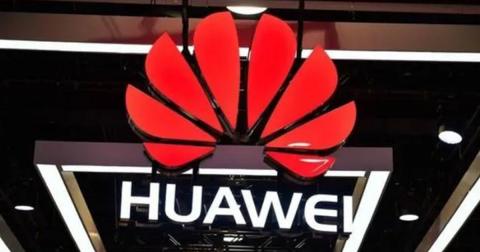
A few days ago, a number of media reported that the Biden administration is tightening export licenses to Huawei, and some US companies' recent related export applications have been delayed or de facto suspended. The U.S. is considering banning U.S. suppliers from supplying Huawei with any products, people familiar with the matter said, adding that it is working on a new export policy for Huawei, which includes 4G products, Wi-Fi 6 and Wi-Fi 7, artificial intelligence and high-performance Computing and cloud computing products.
Some people scolded, lamented, and worried, worrying whether Huawei could survive this round; Naked technological hegemony.
But no matter what perspective you start from, there is a key question that cannot be avoided: How far has Huawei's localization substitution progressed? Can Huawei's supply chain withstand the pressure? With worries and hopes, Master Xin talked to everyone about the status quo of Huawei's supply chain. (Note: The following are public information that can be checked, so you don’t have to worry about the article as a guide for suppression)
01 Three life and death lines related to the future of enterprises
According to the 2021 annual report and operating performance for the first half of 2022 disclosed on Huawei's official website, Huawei has three main businesses: terminal business (that is, the original consumer business), operator business, and government and enterprise business.
Among them, mobile phone and other terminal services, 5G base station construction and other operator businesses are Huawei's main revenue contributors, providing important support for Huawei's "positive cycle model of R&D investment". In addition, the AITO Wenjie brand jointly created by Huawei and Celes rose strongly last year, allowing Huawei, which "resolutely does not build cars", to win the attention of the industry while rapidly expanding its automotive business. But it is worth noting that behind these three businesses is a huge and complex supply chain ecology.
Any fluctuations and breaks in the supply chain will lead to the shutdown of the entire chain, which in turn will affect its business itself. Therefore, since the Ms. Meng incident in 2018, Huawei has begun to increase parts purchases from Japanese and Korean suppliers such as Murata, Toshiba, Kyocera, and Rohm; "plan.
Focusing on the current Huawei, the domestic substitution level of terminal business represented by mobile phones, 5G infrastructure business, and automobile business is very important, and it can even be said that it is related to the life and death of the company's future.
02 The key chip is still a "big problem"
Looking back at the current supply chain status of Huawei's three major businesses, we are pleased to see that Huawei's supply chain is more diversified, and the proportion of domestic and non-A-series suppliers is increasing day by day. This means that Huawei also has more room to maneuver.
But on the other hand, we still need to be soberly aware that key chips are still a "big problem": mobile phone business SoC chips are highly dependent on Qualcomm, computer business chips and base station FPGA chips cannot do without Intel and AMD, and chips with large computing power cannot do without With Nvidia, foreign patents cannot be bypassed in the radio frequency field, and most of the WiFi 6 chips on computers and smart homes have to rely on Broadcom.
As Guo Ping, the former rotating chairman of Huawei, said, solving the semiconductor problem is a complicated and long process. Huawei HiSilicon has previously proved its chip design capabilities, but it is still not a single effort, let alone a short-term effort, to overcome the main bottlenecks in the domestic industrial chain such as semiconductor manufacturing, EDA, materials, and equipment.
In the face of increasingly fierce global technological geo-competition, it is impossible for Huawei to slow down the pace of de-A transformation. Domestic substitution and self-control have become the only options. Of course, not only does Huawei need the full support of the entire industry chain, but the semiconductor industry also needs every "Huawei" to stand out in various segments.
03 Summary
Generally speaking, after years of layout and intensive cultivation, Huawei has now built a supply chain system with a certain ability to withstand pressure, and its localization substitution has made great progress. If it encounters new suppression, it will not approach the "life and death line" in the short term, but business pressure (especially terminal business such as mobile phones) is still inevitable.
Of course, as Guo Ping, the former rotating chairman of Huawei, said: "Huawei is just a company after all, not an industrial chain. We can only help the industrial chain mature and stabilize quickly through investment and Huawei's technology."
Technological innovation is related to the prosperity and decline of the country. We cannot imagine that one company can support an industrial chain. In order to truly realize the supply security of China's semiconductor industry and provide competitive chip products to downstream terminal manufacturers such as Huawei, in addition to gathering international friends and businessmen, it is also necessary for China's semiconductor industry to burst out a more "hard-core" force , This is also what the whole industry and even the whole society expect, and we sincerely look forward to the arrival of this day.


